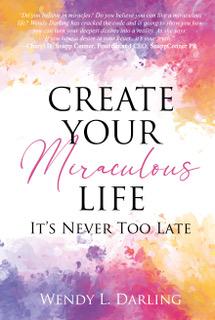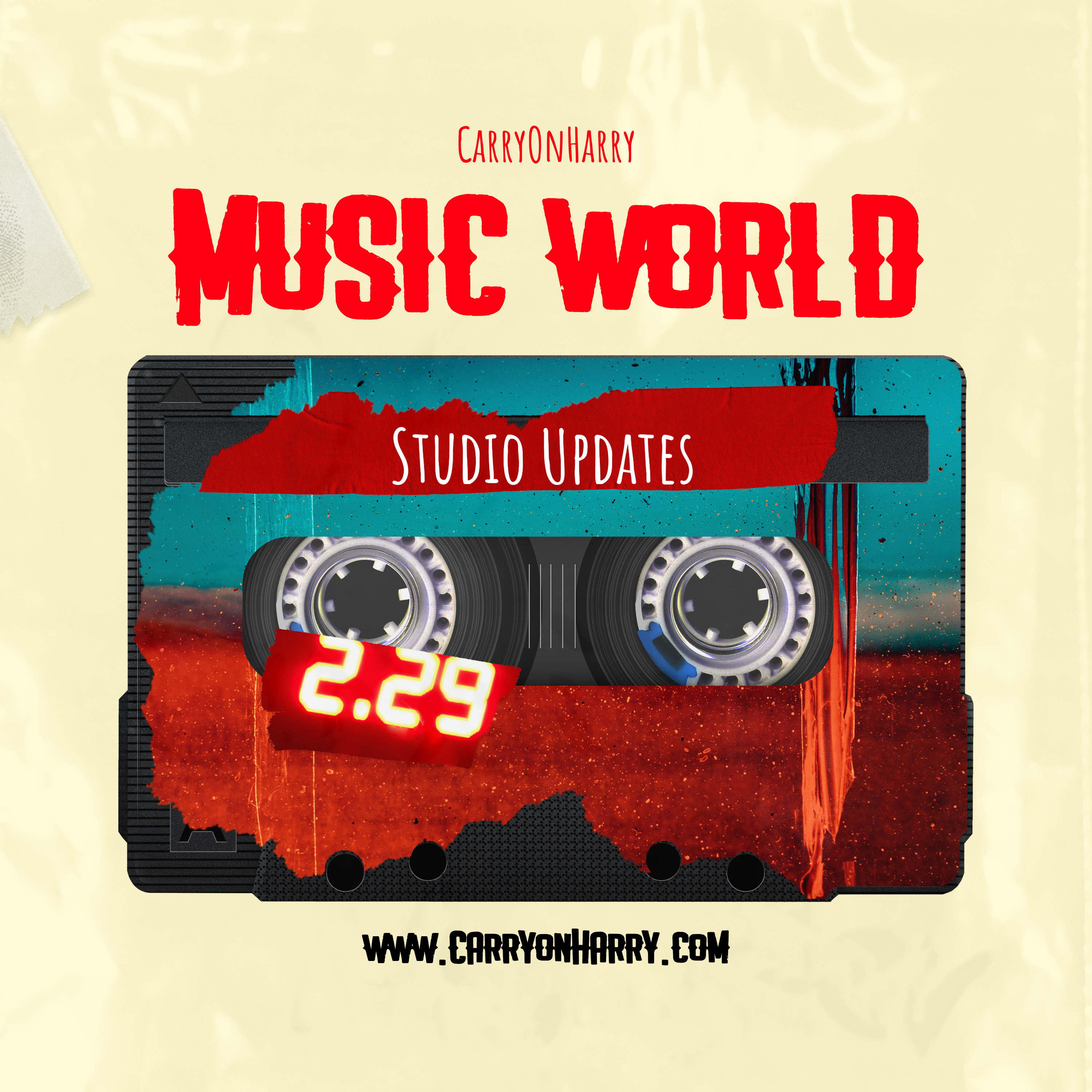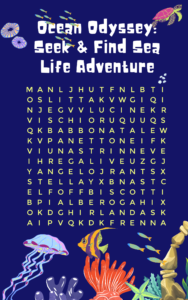Studio Mind
Unraveling the Mystique of Latinx Cinema: A Cultural and Artistic Odyssey

Studio CarryOnHarry Desk — Unraveling the Mystique of Latinx Cinema: A Cultural and Artistic Odyssey
In the world of cinema, few movements evoke as much passion and vibrancy as Latinx cinema. As a senior journalist with over two decades of blogging experience at Studio CarryOnHarry, I have witnessed the evolution of this cinematic genre, where rich narratives intertwine with cultural heritage, social critique, and artistic expression. In this article, we will delve deep into the phenomenon of Latinx cinema, exploring its roots, contemporary relevance, and the voices that are elevating this vibrant narrative to global recognition.
The Historical Tapestry of Latinx Cinema
To grasp the full significance of Latinx cinema, we must first look back at its inception. The beginning of Latinx representation in film can be traced to the silent era. Early depictions were often stereotypical, focused on tropes that marginalized the complex identities and experiences of Latinx individuals. Figures like Ramón Novarro and Lupe Vélez emerged, attempting to carve a niche in Hollywood, yet often found themselves constrained by the industry’s racial and cultural prejudices.
The post-war era brought a transformation in the portrayal of Latinx characters. The Golden Age of Mexican cinema during the 1940s and 1950s introduced a myriad of films characterized by musical numbers, melodrama, and social commentary. Icons like Pedro Infante and María Félix became household names, providing audiences with an escape while subtly tackling social issues. However, globalization’s promises now seemed dimmed by a series of missed opportunities.
A New Wave: The Rise of Contemporary Latinx Filmmakers
Fast forward to the late 20th and early 21st centuries. A surge of filmmakers began to challenge the status quo, infusing their work with authentic voices and narratives. Directors such as Alejandro González Iñárritu, Guillermo del Toro, and Alfonso Cuarón have brought Latinx stories to the forefront, showcasing cultural richness while crossing cinematic boundaries. Their films, like “Birdman,” “Pan’s Labyrinth,” and “Roma,” aren’t merely artistic expressions; they are cultural commentaries that speak to both Latinx and broader audiences.
This contemporary wave of Latinx cinema is not just a celebration of identity; it serves as a platform for dialogue about critical social issues. The emergence of a new generation of filmmakers such as Lulu Wang (“The Farewell”) and Sebastián Lelio (“A Fantastic Woman”) exemplifies this trend. Textured narratives exploring themes of identity, family, and the immigrant experience often resonate deeply, transcending geographical distances.
Cultural Context: More Than Just Entertainment
Film, as an art form, is a reflection of society, and Latinx cinema encapsulates the multifaceted experiences of Latinx communities across borders. The socio-political landscape faced by Latinx individuals has shaped the cinematic narratives that emerge from this community. Stories surrounding immigration, racial dynamics, and cultural intersectionality feed the creative energies of filmmakers and storytellers, enabling them to push boundaries and challenge stereotypes.
As a personal observation from my years in the industry, it’s fascinating to watch how audiences engage with these stories. Films like “Coco” have garnered widespread acclaim, shining a light on Día de los Muertos while attracting non-Latinx audiences to appreciate the culture deeply. The success of such films demonstrates the universality of Latinx narratives — everyone has a family, everyone experiences loss, and everyone cherishes heritage.
Inclusivity in Storytelling: A Cinematic Revolution
If there’s one thing the Latinx film movement teaches us, it’s the importance of inclusivity in storytelling. The industry is witnessing a paradigm shift as many voices that have long been sidelined are finally being given the opportunity to speak. Representation matters, not only for Latinx audiences but for society as a whole.
There’s a certain beauty in the fact that we now see stories being told from different perspectives, incorporating diverse experiences that enrich the cinematic landscape. Films like “In the Heights,” directed by Jon M. Chu, artfully merge the sounds, colors, and stories of the Latinx community, furthering ambition in musical filmmaking while rooting the narrative firmly in cultural specifics, celebrating identity without sacrificing universal relatability.
The Global Perspective: A Cinematic Language Deserves Recognition
As we examine Latinx cinema, it is crucial to recognize its impact beyond borders. Many Latinx films have won international awards, breaking into foreign markets and reshaping global perceptions about Latin American culture. Movies entered mainstream consciousness, such as “Roma,” which received several Academy Awards, showcasing the magnetism of Latinx storytelling.
In an increasingly interconnected world, the international film community must acknowledge and support this growing movement. The language of cinema is universal yet distinct; Latinx filmmakers are crafting unique stories that resonate with global audiences, transcending language barriers while maintaining a strong cultural essence.
Challenges on the Horizon
Yet, despite the progress, challenges remain. The film industry must still confront systemic issues that inhibit equity in representation. The 2020 Oscars sparked valid conversations about diversity and inclusion across the board, yet many in the Latinx community still feel underrepresented as storytellers. The call for more Latinx voices behind the camera and in leadership roles is stronger than ever.
Moreover, the rise of streaming platforms like Netflix and Hulu has opened new avenues for talking heads and underrepresented creators alike; however, the transition must account for balanced narratives rather than existing merely as a token presence. The responsibility lies within filmmakers to ensure that their promotions aren’t just at the surface level – but also engage in authentic practices to elevate artistic voices that have traditionally been muted.
The Role of Audiences: Shaping the Future
As viewers, we possess significant power in shaping the future of Latinx cinema. The support we lend, whether through attendance at film festivals, streaming, or social media endorsements, translates into the success and visibility of films that depict Latinx experiences. In turn, this can lead to more funding, more projects, and ultimately, a richer tapestry of storytelling.
In this social media age, audience interaction has drastically transformed the landscape. Hashtags, reviews, and online discussions surrounding a film can significantly impact its reach and success. The responsibility lies with us to engage meaningfully and thoughtfully.
Reflecting on Our Journey
The journey of Latinx cinema is one marked by resilience, creativity, and a continued fight for representation and acknowledgement. As we look back at how far we’ve come, we must remain vigilant in our advocacy for authentic storytelling and inclusivity. The landscape continues to evolve, bursting with stories waiting to be seen and heard.
In the words of famed filmmaker, Guillermo del Toro, “We are not heroes. We are words that have been on the tip of your tongue.” Each story told in the realm of Latinx cinema is an echo of shared experiences, cultural contexts, and unyielding hope—a cinematic language that deserves our respect and attention.
As we continue to champion diverse narratives on and off the screen, it’s essential to embrace the complexities of identity that Latinx cinema offers, celebrating each story’s bravery and uniqueness. This evolution will not only enrich our understanding but ultimately lead to a cinema landscape that reflects the vibrant world we inhabit.
As we embrace the unfolding narrative journey within Latinx cinema, it serves as a reminder: every voice matters. Let us celebrate these stories and champion the creators behind them—because in their tales, we find pieces of our humanity mirrored back at us.
For those interested in exploring more about this captivating genre, visit Carry On Harry Interviews to speak with filmmakers and industry experts. For deep dives into specific films or topics in Latinx cinema, the world’s resources are but a click away through Google.
Closing Thoughts
As we navigate the cinematic terrain, let’s foster an appreciation for the stories that resonate with a multitude of experiences. Latinx cinema is not just a genre—it’s a powerful movement that transcends artistic expression, creating waves of dialogue that can unite us all.
#LatinxCinema #DiversityInFilm #VoicesOfCinema #RepresentationMatters #CarryOnHarry
Studio Mind
The Evolving Landscape of Independent Film: Bridging Art and Audience

Studio CarryOnHarry Desk — The Evolving Landscape of Independent Film: Bridging Art and Audience
The world of independent film has always been a rich tapestry of creativity, ambition, and, often, struggle. Born from a desire to tell stories that defy the conventional norms of big-budget productions, indie films have garnered a unique charm over the decades. As we journey through the evolving landscape of independent cinema, we will explore not only its present state and its artistic value but also the challenges and opportunities that indie filmmakers face in an ever-changing industry.
The Birth of Independent Film
To really appreciate the current dynamics of indie film, we must travel back to its roots. The 1960s gave rise to a wave of independent filmmakers who sought to break away from the restrictive grasp of Hollywood studios. Visionaries like John Cassavetes and Mike Nichols produced groundbreaking work that emphasized personal storytelling and raw emotion. They paved the way for countless artists, showing that compelling narratives often flourish outside the studio system.
As the independent film movement gained momentum, it became a playground for experimentation, often exploring themes and topics that mainstream films sidestepped. The rise of iconic festivals like Sundance and Cannes provided a platform for these filmmakers to showcase their work, leading to a symbiotic relationship between art and audience that still thrives today.
The Current Landscape: Innovation and Adaptation
Fast forward to today, and the landscape of independent film is as vibrant and diverse as it has ever been. A growing number of platforms and distribution channels have emerged, making it easier for independent filmmakers to reach global audiences. Streaming services like Netflix, Amazon Prime, and Hulu no longer reserve their catalogues solely for big-budget blockbusters; they have opened their arms to indie filmmakers, providing them a stage to showcase their stories.
Crowdfunding Revolution
Crowdfunding has emerged as a revolutionary tool for independent filmmakers. Platforms like Kickstarter and Indiegogo have not only democratized the funding process but have also cultivated a sense of community among directors and viewers alike. A compelling campaign can rally supporters around a project, turning strangers into advocates. What’s beautiful about this model is that it allows filmmakers to maintain creative control without the strings attached by traditional studio financing.
This democratization of fundraising also complements a growing interest in niche storytelling—voices that represent marginalized communities, unique perspectives, and unconventional narratives. The ability to access funding directly from the audience drives a kind of artistic innovation that is refreshing in its authenticity.
Festivals: The Heartbeat of Indie Cinema
Film festivals have long been a critical element of the indie film ecosystem. They serve not only as a platform for showcasing new work but also as networking hubs where filmmakers can meet industry executives, fellow creators, and passionate audiences. Festivals such as Tribeca, SXSW, and, of course, Sundance have become the launchpads for many successful independent films.
These gatherings provide opportunities for discussion panels and workshops, creating an environment that fosters collaboration and knowledge-sharing among both emerging and veteran filmmakers. The atmosphere is often electric, filled with the anticipation of discovery—audiences eagerly wait to see which cinematic gems will emerge from these events.
Challenges: The Constant Tug-of-War
Despite the burgeoning opportunities, independent filmmakers still face significant challenges. The competitive nature of the industry means that standing out in a saturated market is no small feat. Success often hinges on not just the quality of the film but also the effectiveness of marketing strategies.
Promoting an indie film can be daunting. Unlike their mainstream peers who have marketing budgets big enough to carry a small country, independent filmmakers must often wear many hats—writer, director, producer, and marketer. Social media has become a vital tool in this regard, yet finding the balance between artistic integrity and commercial visibility remains a constant struggle.
The Battle Against Distribution Inequities
Moreover, distribution inequities continue to be a significant hurdle for many indie creators. The traditional pathways—through theatrical releases and DVD sales—are increasingly overshadowed by the streaming revolution. Many filmmakers find themselves at the mercy of a few gatekeepers who control access to these platforms. For every breakout hit that gets picked up by a service, countless others go unnoticed.
Cultivating a Community of Support
In the face of these challenges, community remains the cornerstone of independent cinema. Filmmakers are increasingly turning toward one another for support, whether through collaborative projects or mentorship relationships. By sharing knowledge and resources, they are building networks that strengthen the indie film ecosystem, fostering mutual upliftment rather than competition.
Longtime supporters of independent film, such as producers, critics, and even documentary filmmakers, are creating spaces for conversation that allow new voices to emerge. This culture of empowerment is essential for the survival of the indie spirit—time-honored mentors are championing the next generation, ensuring that the innovative storytelling that defines independent film continues to flourish.
Personal Reflections: A Love Letter to Indie Film
As a seasoned journalist with two decades of chronicling the arts, I find myself reflecting on the evolution of independent cinema and its profound impact on society. Each indie film is a bold declaration: a narrative that pushes boundaries and challenges perceptions. I recall attending smaller film festivals where the energy in the air felt palpable, vibrating with possibility—those moments where I witnessed a filmmaker’s dreams come to life were nothing short of magical.
I believe indie films serve not only as entertainment but also as mirrors reflecting our collective consciousness; they bring forth discussions around identity, culture, and social issues that resonate deeply with international audiences. When we support independent filmmakers, we are endorsing the multiplicity of voices that enrich our cultural landscape.
The Future: Bold Horizons Ahead
The future of independent film seems bright, yet it requires continuous innovation and adaptation. As emerging technologies like virtual reality and artificial intelligence weave their way into the fabric of cinema, indie filmmakers have an opportunity to explore new narrative formats and experiential storytelling. The question will be whether they can do so while staying true to the authenticity that has defined the indie movement from its inception.
Could VR be the next frontier for indie storytelling? Imagine stepping into a narrative world crafted by an independent filmmaker, fully immersing yourself in their vision. The possibilities are limitless.
In addition, the push for greater representation on screen and behind the camera continues to gain momentum, promising a richer array of stories, voices, and perspectives for audiences worldwide.
Closing Thoughts: The Art of Connection
As we navigate the complexities of the entertainment landscape, it’s essential to remember the heart of independent cinema: connection. Whether through shared experiences at film festivals, crowdfunding campaigns that rally communities, or authentic storytelling that resonates with our collective human experience, independent film cultivates relationships that go beyond mere viewing—it forms bonds, challenges us, and inspires us to reflect on our shared journey.
So, here’s to the indie filmmakers, the dreamers, the storytellers, and the visionaries who bravely venture into the fray. Your stories matter, and they shape the cultural conversation. Keep fighting the good fight.
For more insights, be sure to check out our section on interviews at CarryOnHarry Interviews and discover how independent filmmakers are rising to the occasion.
At the end of the day, it’s about preserving the narrative—everyone has a story to tell, and the world is eagerly waiting to listen.
Studio CarryOnHarry Entertainment Desk
IndependentFilm #IndieCinema #Filmmaking #CreativeCommunity #FilmFestivals
Studio Mind
How to Improve Podcasting Skills?

How to Improve Podcasting Skills?
Studio CarryOnHarry Desk — The Evolution of Streaming: How It Changed the Landscape of Entertainment
In the past decade, we have witnessed a seismic shift in how we consume entertainment. Gone are the days when families would gather around a television set to watch the latest episode of their favorite sitcom. The world of streaming has not only diversified the offerings of content but has also transformed the very fabric of our cultural consumption.
The Dawn of Streaming: A Brief History
To understand the impact of streaming on entertainment, we need to start with a glimpse into its origins. The first real wave of streaming came in the early 2000s with companies like Netflix. Originally a DVD rental service, Netflix pivoted towards streaming in 2007, allowing users to instantly access a vast library of films and shows. This transition was more than technological; it paved the way for new storytelling formats and how audiences engaged with that content.
In these early years, the available content was somewhat limited, but it was revolutionary. Suddenly, binge-watching became an phenomenon. Viewers, empowered by the ability to watch an entire season in one go, shifted away from traditional weekly episodic models. The term “binge-watching” itself entered our lexicon, illustrating how quickly our consumption habits were evolving.
The Breakthrough of Original Content
The year 2013 marked a pivotal moment when Netflix launched its first original series, House of Cards. With its high production value and complex characters, it signaled to the world that streaming platforms weren’t just a place for old sitcoms; they could produce high-quality original content that rivaled traditional television. Following suit, other platforms began pouring money into original programming. Amazon Prime, Hulu, and later Disney+ and HBO Max all entered the fray, vying for viewer attention with aggressive marketing and exclusive content.
This rivalry led to a golden age of television where creativity flourished. Scriptwriters no longer needed to adhere to strict network guidelines or worry about ratings; they could tell their stories authentically and engage niche audiences. Titles like The Crown, The Handmaid’s Tale, and Stranger Things not only captivated audiences but also garnered critical acclaim, further solidifying the legitimacy of streaming platforms.
Global Perspectives: Streaming Beyond Borders
The influence of streaming is not confined to the United States. Internationally, platforms have surged, tapping into regional audiences. For example, Netflix’s foray into producing Indian originals like Sacred Games exemplifies how streaming transcends cultural barriers, offering stories that resonate with diverse populations while providing a global platform for local narratives.
Moreover, the rise of dubbed and subtitled content has made international productions more accessible. Viewers are now more inclined to explore stories from countries like South Korea – think the overwhelming success of Squid Game – or Spain, which saw Money Heist become a worldwide sensation. This not only broadens audience horizons but also enriches cultural understanding and empathy across borders.
The Business Side of Streaming
As competition intensifies, the business models surrounding streaming have evolved. Subscription Video on Demand (SVOD) services dominate the industry with major players like Netflix, Amazon Prime, and Hulu leading the charge. However, ad-supported models like Peacock and Tubi have also found their place, offering viewers more affordable options while still attracting significant advertising revenue.
This structural shift affects not only how we consume content but also how it’s produced. With a shift toward data-driven decisions, platforms leverage analytics to gauge audience preferences. This knowledge helps focus on generating content that garners high viewer engagement, sometimes at the cost of artistic expression. Are we witnessing the illicit rise of algorithmically-driven storylines that favor metrics over narrative authenticity?
A Closer Look at Audience Behaviour
The psychology behind how we engage with streaming content is equally interesting. Despite being overwhelmed by choices—a phenomenon known as the “paradox of choice”—viewers tend to gravitate toward familiar brands and beloved genres. The ease of access has nurtured a culture of instant gratification, further embedding streaming services into the daily lives of millions.
Interactive content has also made waves, with shows like Black Mirror: Bandersnatch pushing the boundaries of audience engagement. The ability for viewers to choose their own narrative path fosters a unique connection with the material, making entertainment not just a passive experience but an interactive journey.
The Future of Streaming: What Lies Ahead?
As we look to the future, the trajectory of streaming remains a hot topic among industry experts. The question looms: will streaming platforms continue to dominate, or will we see a return to more traditional forms of content consumption? Subscription fatigue is real, as consumers grapple with multiple service payments that can add up quickly. The recent trend towards consolidation within the industry—such as the merger of WarnerMedia’s HBO Max with Discovery+—could spell a new era of combined services or potentially lead to the resurrection of cable.
The integration of technologies such as Virtual Reality (VR) is also emerging within streaming. Imagine immersing oneself in a complete world where viewers don’t just watch a show but live within it, molding their experiences. These technological advances may likely redefine our expectations of content.
Reflecting on the Journey
What stands out most amidst this whirlwind of change is the undeniable role streaming has played in democratizing storytelling. Voices once sidelined by traditional media now have venues to express their narratives, fostering a vibrant tapestry of content that makes way for diversity and inclusion.
In the end, while the industry will continue to evolve, the essence of storytelling—whether through film, series, or interactive media—endures. Streaming may have changed how we access stories, but it ultimately underscores our everlasting need for connection, empathy, and understanding.
As we navigate this new landscape, let’s remain curious and open to the multifaceted narratives that streaming has to offer. They could just be the collective stories that shape our future.
Reporting by: Studio CarryOnHarry Entertainment Desk
StreamingEvolution #BingeWatching #DigitalMedia #CulturalStories #EntertainmentIndustry
-

 Editor's Choice4 months ago
Editor's Choice4 months agoRanveer Singh and Deepika Padukone Reunite for New Romantic Comedy
-

 Editor's Choice10 months ago
Editor's Choice10 months agoReview: Rekhachithram (2025) – A Masterful Blend of Mystery and Redemption
-

 People's Choice5 months ago
People's Choice5 months agoBollywood in August 2025: A Landscape of Sequels, Social Commentary, and Star Power
-

 Authors and Artists4 years ago
Authors and Artists4 years agoCreate Your Miraculous Life: It’s Never Too Late Wendy L. Darling






